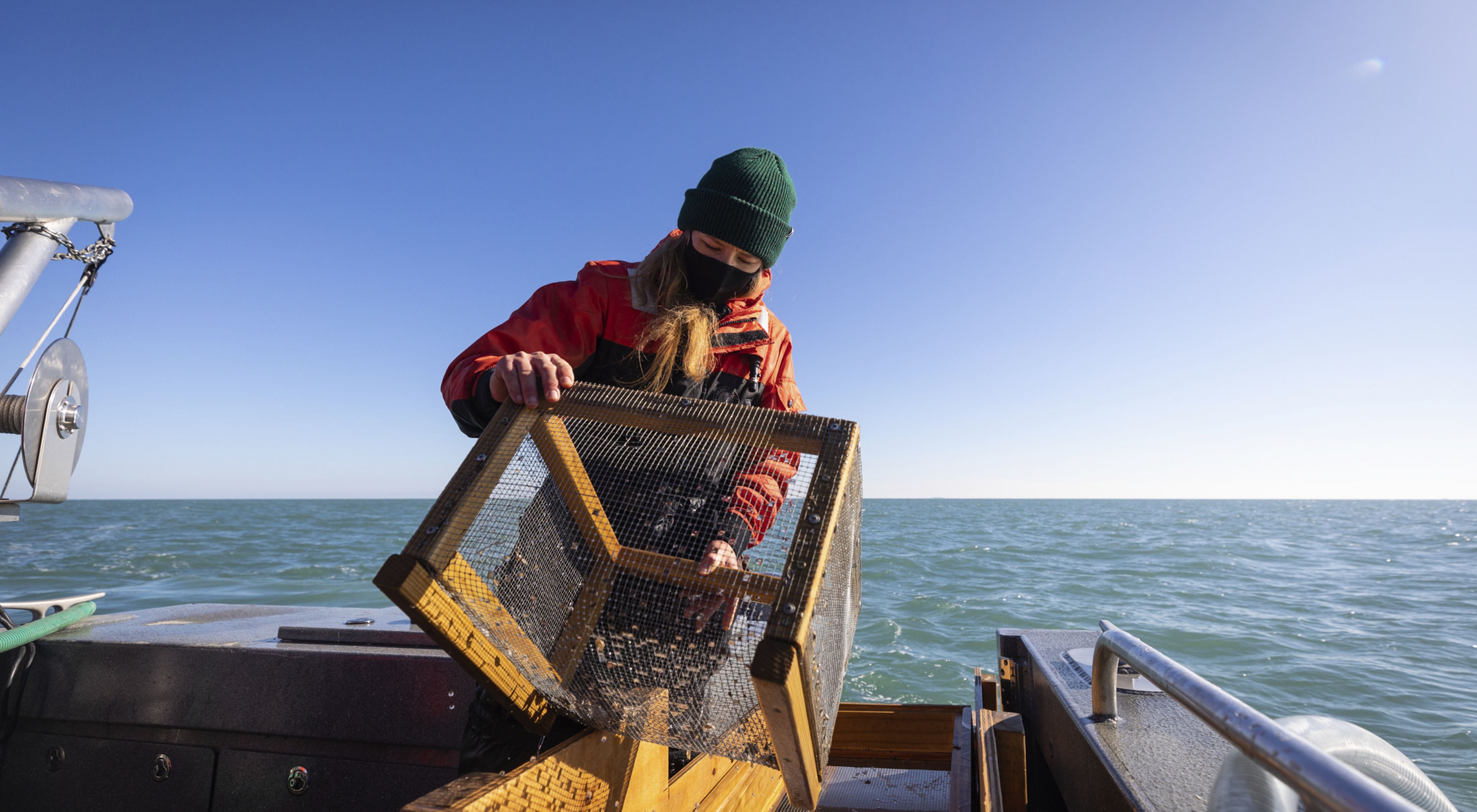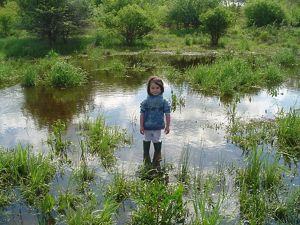When it comes to getting people to take action for wildlife, being cute and furry or colorful and majestic surely helps. And having a catchy name doesn’t hurt.
Lake whitefish unfortunately have none of those attributes working in their favor.
“They have a pretty low profile,” says Alexis Sakas, The Nature Conservancy’s natural infrastructure director in Ohio. “But they have been essential to Indigenous communities for centuries. And they were historically so plentiful that they supported a large commercial fishery in Lake Erie, which in the mid-1900s averaged about 50 million pounds annually—often equaling the other four Great Lakes combined."

What Happened to Lake Whitefish?
Lake whitefish are an important food source for other fish species, and they are still harvested from some areas, contributing to a fishing industry in the Great Lakes valued at more than $7 billion a year. But in recent decades, they have almost disappeared from Lake Erie, and according to Alexis, “We don’t know exactly why they have declined so dramatically.”
Quote: Alexis Sakas
“We don’t know exactly why they have declined so dramatically.”
Like most freshwater systems, Lake Erie has changed considerably over the past century. The list of stressors is long: development, industrialization, overfishing, invasive species, poor water quality caused by agricultural and urban runoff, and a multitude of impacts related to climate change. “The system is altered and dynamic, and there’s a lot we don’t know about lake whitefish,” says Alexis. “That makes it very difficult to know how to help.”
So, despite the species’ lack of obvious charisma, TNC is investing in research to discover the source of its decline, because its future in Lake Erie—and the productive fishing industry of the Great Lakes—are at stake.


Collecting Clues
Zach Amidon, a Ph.D. student at the University of Toledo with a background in fisheries research and management in California, New York and Ohio, is leading the lake whitefish effort. “The first question we set out to answer is: When in their life cycle are we losing them?” he says. To find out, he collected eggs, larvae and juvenile fish. “That allowed me to determine that they are spawning and their eggs are hatching, so we can conclude there is available and healthy spawning habitat.”
Quote: Zach Amidon

The first question we set out to answer is: When in their life cycle are we losing them?
Zach is now working to understand if larvae have what they need to grow. When lake whitefish hatch in the spring, they may be miles offshore and at the mercy of currents to carry them to shallow waters bordering natural lakeshores, where they can access food like zooplankton. “Larvae are still being carried to nearshore areas,” he says, “but the overwhelming majority of Lake Erie’s shoreline in Ohio has been armored with flood-control levees and other structures.” Zach created a modeling tool to analyze lake current direction and velocity. That information helps him predict where larvae will be transported and understand where improved access to food sources could be beneficial.

“As research continues,” says Alexis, “we will overlay findings to help prioritize habitat investments such as spawning reef or shoreline restoration to increase lake whitefish populations.”
The new attention to lake whitefish is also helping propel an effort to measure, map and communicate the social, cultural and economic benefits and values associated with Great Lakes fisheries. Globally, about 85% of fisheries are facing significant threats. The biology and plight of lake whitefish are similar to many commercial fishing species—so the results of these combined efforts can help inform TNC’s work to understand, maintain and restore fisheries around the world.
DISCOVER MORE
Learn about fisheries restoration and watch videos of Alexis and Zach in action.
Dive Deeper


